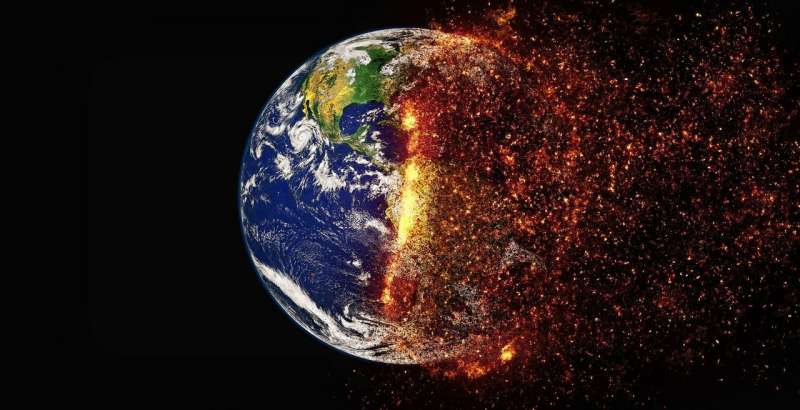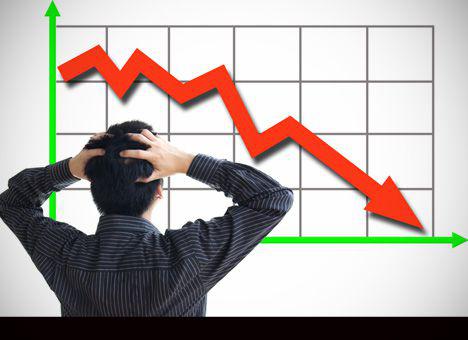Updated Climate Change Risk Models Are Giving Insureds and Underwriters a Better Chance to Defend and Restore Property

“Climate change is often cast as a prediction made by complicated computer models,” writes Julia Rosen, a journalist with a Ph.D. in geology, in The York Times. “But the scientific basis for climate change is much broader, and models are actually only one part of it (and, for what it’s worth, they’re surprisingly accurate).”
These models provide definitive proof that climate change is occurring. Climate models are also key to understanding climate behavior so that scientists can make more accurate predictions. While these models are primarily used by scientists, meteorologists and researchers, they also are important to those within the insurance industry.
The Link Between Climate Change and the Insurance Industry
To be fair, the insunance industry has had concerns over the climate since 1973 due to an increase in flood damage. But, it wasn’t until 2005 when the devastating hurricanes Rita, Wilson, and Katrina caused insurers to pay out roughly $60 billion in claims that the industry really began to pay attention.
Since then, there has been a seemingly nonstop onslaught of floods, wildfires, and hurricanes.
“Stronger and more frequent natural disasters, for example, are destroying homes and businesses at record-breaking rates and putting entire food systems at risk,” write Antonio Grimaldi, Kia Javanmardian, Dickon Pinner, Hamid Samandari, and Kurt Strovink for McKinsey. “Hurricane Harvey caused $125 billion in economic damage in 2017. The 2019–20 Australian bushfires killed more than a billion animals and caused more than $4.4 billion in damage. Climate-linked issues, such as extreme heat, natural disasters, and biodiversity loss—and the failure to respond to these challenges in time—dominate reports issued by organizations such as the World Economic Forum.”
As the insurance industry specifically, this has caused financial hardships for insurance companies. For example, following Hurricane Katrina, Poe Financial, the fourth-largest insurer in Florida, declared bankruptcy. Another example was Merced Property and Casualty Company that had to liquidate to pay out insurance claims after the Camp Fire in California.
As a consequence, insurance companies have had to respond by rethinking their policies. Primarily, when it comes to where coverage is offered and for how much. This has led to insurers leaving regions that are prone to flooding and wildfires. If they do remain in the area, premiums are rising. As an example, homeowners in California have experienced a rise in their premiums by as much as 500 percent.
The Importance of Climate Change Risk Models
As stated by the Geneva Association’s Task Force on Climate Change Risk Assessment;
“As insurers, we play an important role in understanding, modelling and preventing climate risks. The decision-making framework put forward in this report can help to design and carry out internally climate risk assessments while considering key factors like relevant time horizons as well as physical and transition risks. Although work still needs to be done across the industry, collectively engaging stakeholders through this Task Force and Working Group is a big step towards market-wide forward-looking scenarios.”
And, one way that this can be accomplished is through updated climate change risk models, such as the latest hurricane and wildfire models from catastrophe (CAT) modeling firm AIR Worldwide.
The goal of this long-term project is to offer both insurers and their customers more accurate assessments of climate change risks. AIR fuses “traditional hybrid, physical, and statistical approaches with a new set of tools that come from the world of artificial intelligence — specifically machine learning” to provide more precise data. The firm also expects that this unique framework will provide insights into “not only today’s new climate questions, but also tomorrow’s.”
According to Liz Henderson, senior managing director of analytics at Aon, there’s a “huge demand” froinsurers, as well as other industries, to assess the impact of climate change in the near, medium and long term.
However, there’s still a disconnect regarding what CAT models can contribute and what regulators can ask companies to understand in how climate change will impact their finances.
“I think there will be a lot of development over this year and the next few years on that specific question: How to link climate change data, which tends to be global, to the stochastic models based on more current climate conditions and the high-resolution stochastic process,” Henderson said.
AIR is hoping to fill this gap by incorporating a module for precipitation induced flood risk. Insurers can use this to determine policy elements, such as deductibles, limits, and premiums. “By quantifying the element the insurer was dealing with more subjectively before, it may reduce uncertainty and take away some amount of conservatism around estimated loss gross-up factors embedded in pricing,” said Andrew Hickman, global head of risk modeling and data science at Marsh Advisory.
Hickman added that from a broker’s perspective, AIR’s hurricane model change is “very exciting.” This is because clients residing in these areas face that risk, and “inland flooding is a significant issue that we’ve seen with just about every hurricane in 2020.”
Additionally, AIR is working on a wildfire model update for 2023. This update will take into account everything from climate change to vulnerability to improve construction and occupancy codes. And, hopefully, this can help mitigate wildfires as well.
The firm is also exploring the vapor pressure deficit (VPD). This is the difference between the amount of moisture that’s in the atmosphere and how much there can be. “That’s a better indicator of a wildfire burn area, and we’re looking at that metric in different parts of the Western U.S., the domain covered by the model,” said Dr. Peter Sousounis, Senior Principal Scientist in the Research and Modeling Division at AIR.
The Role of Artificial Intelligence
Additionally, in conjunction with updated climate change risk models, insureds and underwriters can also turn to artificial intelligence to assist with forecast and disaster resiliency.
“AI-powered predictive analytics along with drones, advanced sensor platforms and similar tools can monitor tremors, floods, windstorms, sea-level changes, and other possible natural hazards,” writes Deeksha Chopra for Earth.Org. “This technology can help government and concerned agencies to take timely actions and the availability of such information in real-time with automated triggers can enable early evacuations when needed.”
“Various meteorological companies, tech companies like IBM, Palantir, and insurance companies are combining AI with traditional physics-based modeling methods to model the impact of extreme weather events on infrastructure and on their other systems to advise the disaster risk management strategies.”
Moreover, AI can “detect changes in land use, vegetation, forest cover, and the fallout of natural disasters,” monitor ocean conditions, predict droughts, and make smart suggestions on how to combat climate change.
The Opportunity for the Insurance Industry
And, these models can help the insurance industry revise its business models to support customers. McKinsey suggests;
- Stress-test total exposure against projected climate hazards. “Interconnected global systems mean that the concentration of risk will likely increase as climate-related losses spread across different types of coverage—flood, property damage, and business interruption,” note the authors. “Aggregation risk—the risk of multiple claims filed in connection to a single event—will also extend beyond geographic bounds as climate change elevates the risk of systemic disruption.”
- Build resilience and rebalance portfolios. “With such a detailed analysis, insurers can build greater resilience by considering low-probability catastrophic events, diversifying their portfolio, and planning to evolve exposure over time,” they add. “Risk models that assume nonstationary risk and de-emphasize historical data will be especially valuable.”
- Help organizations mitigate risk change. Insurers can encourage their customers to combat climate change, like offering rebates if a business uses more resilient construction materials.
- Create more innovative products to address climate change risk. “Insurers have an opportunity to offer innovative solutions to cover newer and more frequent hazards, both acute (such as wildfires) and chronic (such as reduced crop yields),” state the authors. “Solutions could be as straightforward as parametric pricing—insuring policyholders against events of a set magnitude instead of insuring the value of losses.”
- Revise investment strategies. “Insurers should reevaluate their investment-allocation strategies as the economy transitions toward long-term decarbonization, which may cause rapid asset repricing and portfolio volatility, particularly for carbon-intensive investments,” they suggest. “Insurers should also systematically evaluate the combined exposure of their investment and underwriting portfolios to physical climate risk, especially where both assets and liabilities could be affected.”



